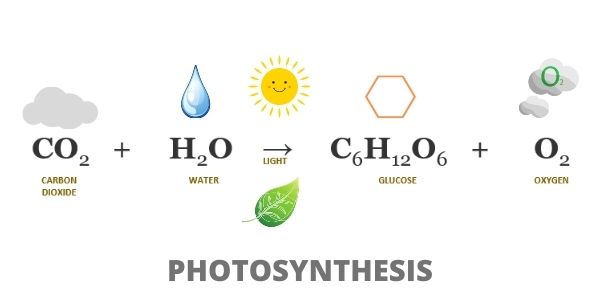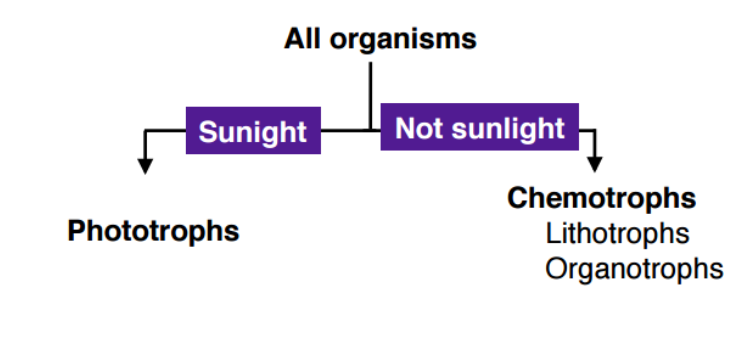Table of Contents
Autotrophic Nutrition
Nutrition is the process by which organisms obtain nutrients from food and use them to obtain energy and to build and repair their tissues.
Autotrophic nutrition is a mode of nutrition in which organisms synthesise their food from simple inorganic substances such as carbon dioxide and water that are present in the environment, in the presence of sunlight.
Types of Autotrophic Nutrition
There are two types of Autotrophic Nutrition
Chemosynthesis
Chemosynthesis is a process in which organisms synthesise carbohydrates from carbon dioxide and water by using chemical nutrients as an energy source rather than sunlight. Organisms that use this type of autotrophic nutrition are called chemotrophs or Chemosynthetic autotrophs. Unlike photosynthetic organisms, Chemosynthetic autotrophs obtain their energy by the oxidation of simple inorganic chemicals such as sulphates or ammonia (NH3).

Examples of Chemosynthesis
- Sulfur oxidizing Bacteria: – These bacteria are able to convert sulphur compounds into energy-rich organic compounds. They are often found in environments such as hydrothermal vents, where they use the energy released from breaking down hydrogen sulfide molecules.
- Nitrogen-fixing Bacteria – Nitrogen-fixing bacteria play a crucial role in the nitrogen cycle by converting atmospheric nitrogen into a form that can be used by plants. These bacteria form symbiotic relationships with certain plants, such as legumes, and help them to obtain nitrogen.
- Iron-Oxidising Bacteria – These bacteria obtain their energy by oxidising iron compounds. They are often found in environments with iron-rich minerals, such as acid mine drainage.
Photosynthesis
Photosynthesis is a complex process in which green parts of plants, such as leaves, synthesise organic food. This food is produced by green plants from carbon dioxide and water in the presence of sunlight and chlorophyll, a green pigment that captures solar energy. The process of Photosynthesis can be summarised by the following formula:
6 CO2 + 6 H2O + sunlight → C6H12O6 (glucose) + 6 O2
In Photosynthesis, carbon dioxide and water serve as raw materials, while glucose (carbohydrate) and oxygen are the end products. The glucose produced is utilized by the plant to provide energy. Excess glucose is stored in the form of starch and serves the plant as an internal energy reserve.

Also Check – Steps Of Photosynthesis
Factors Affecting Photosynthesis
Several factors influence the rate of Photosynthesis:
- Intensity of Sunligh t – Higher intensity of sunlight leads to increased photosynthetic activity, up to a certain threshold. Beyond this point, the rate of Photosynthesis plateaus as the plant reaches its maximum capacity.
- Quality of Sunlight – Plants use certain wavelengths of light for Photosynthesis. The colours of light most efficiently absorbed by chlorophyll are blue and red, while green light is poorly absorbed, giving plants their green appearance.
- Duration of Sunlight – Longer durations of sunlight provide more time for Photosynthesis to occur, thus increasing the overall productivity of plants. Read More…
Examples of Photosynthesis
- Plants – Most plants rely on Photosynthesis as their primary mode of autotrophic nutrition. They convert sunlight into energy-rich compounds through specialised structures called Chloroplasts.
- Algae – Algae are a diverse group of organisms ranging from single-celled organisms to large seaweeds. They are capable of Photosynthesis and play a crucial role in marine ecosystems.
- Cyanobacteria – Cyanobacteria, also known as blue-green algae, are a type of bacteria capable of Photosynthesis. They make an important contribution to oxygen production and nitrogen fixation in various habitats.
Also Check – Differences between Autotrophic Nutrition and Heterotrophic Nutrition


5 Comments on “Types of Autotrophic Nutrition – Chemosynthesis and Photosynthesis”